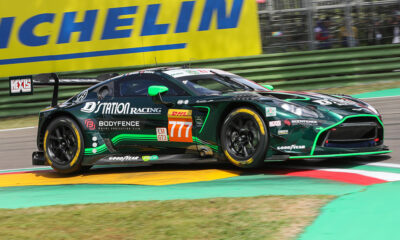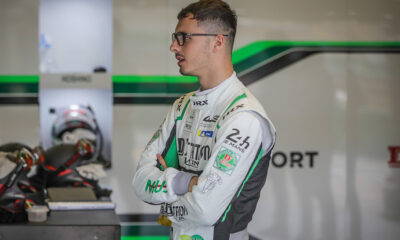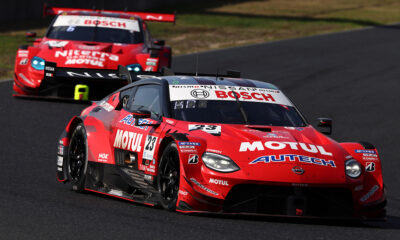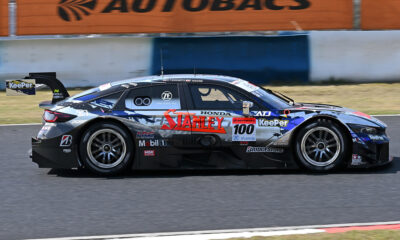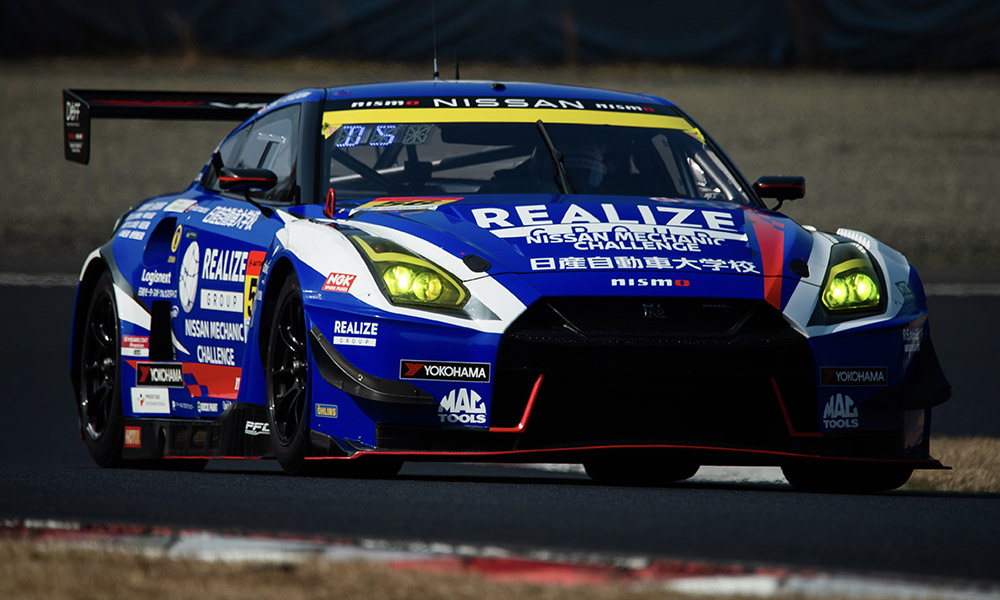
Photo: Konishi Yuya
Joao Paulo de Oliveira says he is bracing himself for a difficult season in SUPER GT this year with what he describes as a “massively heavy” Nissan GT-R NISMO GT3.
The GT-R will go into this weekend’s opening round of the season at Okayama International Circuit as the heaviest of the 14 different models in the GT300 class, with a minimum weight of 1402 kg – up from 1320 kg for last year’s curtain-raiser.
While all GT300 cars have been handed weight increases this year as a safety measure, the GT-R was previously level with the Lexus LC500h and Mercedes-AMG GT3 Evo, whereas it is now 24 kg heavier than the former and 33 kg heavier than the latter.
All four GT-Rs struggled for pace throughout official testing last month, with the Kondo Racing example shared by de Oliveira and Daiki Sasaki ending up 18th overall at Okayama and 13th in a rain-affected final test at Fuji Speedway.
“We have a clear image of where we are going to be in terms of speed, and we don’t have anything left in our pocket,” de Oliveira told Sportscar365.
“We’re massively heavy, heavier than the other GT3s, but not only that, but we’ve also lost power, and our refuelling will be longer, because this has been changed too. We are restricted in many areas.
“This is the reality and we have to deal with it. We just have to do our best and try and pick up some points.
“Race pace is usually our strong point, and this is what we have to try and maximize.”
The GT-R was hit with a 35kg weight increase for the final round of the 2023 season, which came with a small increase in turbo boost pressure that has now been reversed according to the Balance of Performance for this weekend’s Okayama opener.
De Oliveira feels Nissan is essentially being punished for Kondo’s strong performances in recent seasons, which includes GT300 titles in 2020 and 2022, and that only a run of poor form can convince the rule makers to make changes.
“The only way to explain the change [to the BoP] is that we deliver results,” said the Brazilian. “The only way, unfortunately, to get a better BoP is to get bad results. It’s almost obscene, but that’s how it is.
“It’s like training for a marathon and being told at the start line that you have to run it wearing flip-flops instead of shoes. This is the way I feel when I see this BoP. It’s like you have no chance.
“But you still have to try, and keep your head high no matter what final result. This is the situation that has been presented to us, and we don’t have the power to change it.”
Mixed Views On GT300 Weight Increases
While not satisfied with the GT-R’s BoP, de Oliveira said he had no issue with the across-the-board weight increases that have been implemented by the GTA, which ranged between 33 kg and 52 kg depending on the characteristics of each model.
“If the intention is to increase the gap between GT500s and GT300s and make it easier to overtake, then I’ve no problem with that,” said de Oliveira. “If all the cars are increased by the same amount, it’s not really an issue, then it’s the same for everyone.
“Driving a heavier car means you have to brake earlier, and that makes it easier for the GT500s to overtake us under braking – especially because the GT300s have ABS and that makes it easier for us to brake than the GT500s, which can lock up.”
However, not all GT300 drivers are in favour of the move toward extra weight, with Team LeMans Ferrari driver Roberto Merhi among the most vocal critics of the changes.
The Ferrari 296 GT3 that Merhi will share with Yoshiaki Katayama will run at a minimum weight of 1371 kg, making it the joint-second heaviest GT3 car in the field after the GT-R, along with the Honda NSX GT3 Evo22.
“They say it’s for safety reasons, but it’s not safer at all because the kinetic energy is the same or higher,” Merhi told Sportscar365. “It doesn’t help on that side. I don’t understand why they have done this.
“Something nice about coming to Japan is to drive ‘proper’ cars with good tires, it’s one of the reasons I am here. But putting this extra weight on the car, it’s not nice to drive. The car feels super-lazy and I don’t like it.”

















